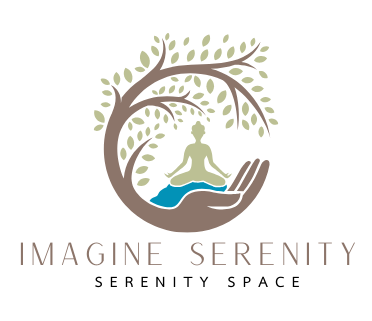Required Classes (not always taught in this order)
- Alignment/Anatomy Learn how the basic alignment of yoga poses are designed to help students position their bodies in a way that helps them get the full benefits of their poses. Learn how to use the basics of anatomy to assist understanding of the poses. This class will include practice in a chair, on the wall and laying on the floor to help the body make a memory of what posture is supposed to feel like. We will review the principles of balance, standing poses and forward bends to ensure the safety necessary to get the full enjoyment in your classes. (Read: Yoga Anatomy by Kaminoff)[spacer height="20px"]
- Class Structure/Establishing Flow Learn how to sequence your practice for ultimate benefit for body, mind and spirit. Learn how to counter stretches and why they are are so important. Learn simple tips to remember left/right in sun salutations, standing poses, balances and kundalini kriyas. Learn the basics of breathing techniques and how to incorporate them into a flow. Learn warming up and cooling down techniques, when to take a pose deeper, and when and how to create a flow. This class will enable you to create a home practice, as well as learning to teach through doing. This class also discusses the importance of chakras in a yoga class. (Optional: New Chakra Healing by Cyndi Dale)
- Meditation Many would say that meditation is the purest form of yoga, indeed, it was why the physical poses were created. It's much easier to relax and simply be if the body isn't restless. However, yoga is not separate from meditation, any more than life is separate. Meditation is one of the hardest concepts for students to grasp, and absolutely the most important. Learn to create a class that is meditative, learn the myriad ways to meditate and learn what meditation really is. We will study mudras and mantras. This class will include deep immersion into guided, active and silent meditation. Breathwork is an important element of meditation and we will explore different techniques here. (Reading: The Yoga Sutras of Patanjali Chip Hartranft translation)[spacer height="20px"]
- Props Props are really fun, really easy ways to help students love yoga. Originally developed by famed yoga teacher BKS Iyengar, props allow students to go deeper in their poses early on, and more importantly, allow students to feel successful when they get frustrated with the normal limitations of the beginner. This class will explore the use of blocks, straps, sandbags, bolsters, chairs, walls and the help of other students. We will go deeply into restorative yoga poses, as well as begin to sequence with partners. You will never look at your couch in the same way, once you learn what a great yoga prop it can be! (Reading: Light on Yoga by Iyengar) [spacer height="20px"]
- Yoga Philosophy & Styles Using the sacred texts of the Yoga Sutras of Patanjali and the Bhagavad Gita, we will come to a deep understand of what yoga really is all about. Exploring the history of yoga and the many styles under the umbrella of Kundalini will help you see beyond asana, and into heart. This class requires advanced reading of the above books and will contain plenty of discussion. We take the yoga off the mat here and explore the basics of Hinduism, Buddhism and how all faiths line up with the philosophy of yoga. May include field trip to local sites. (Reading: Bhagavad Gita -Stephen Mitchell translation)[spacer height="20px"]
- Safety/Touch/Cueing Whether you want to teach professionally, or just to friends and family, the key to a successful yoga class is safety. Learning to understand the differences in students comprehension, whether they are audio, visual, kinestic learners or a combination of all, is the difference between a good class and a great class. Learn how to use gentle touch to assist students in a safer, deeper pose. Learn the keys to cueing properly and how to use your own body cues to help understand your students. This class will be hands on, and require students to teach one another a short vinyasa sequence. (Optional Reading: Yoga Adjustments by Mark Stephens)[spacer height="20px"]
- Creating Community & Healthy Practice Do you ever wonder why some yoga teachers have large classes, and some just eek along? One of the strongest keys to teaching yoga is to create an atmosphere where students feel safe, where they can allow themselves to be vulnerable and most importantly, where fun is encouraged. We will explore ways to build a thriving yoga community, and to keep ourselves healthy in the process. Learning self care and protection will help keep your practice from suffering burnout, and keep your love of yoga fresh. We explore other healing modalities in this class, such as Reiki, Ayurveda, Chi Gong, Massage, etc. (Reading: Yoga and the Quest for the True Self by Stephen Cope)[spacer height="20px"]
- Sanskrit and Inclusive Language By this class, you will have picked up a working knowledge of Sanskrit to describe the poses. We will delve into a breakdown of the language and learn when to use them in class. We will learn to lead by allowing the yoga to come through us, and eliminate anything that takes us out of the flow. We will also discuss how to use words to help students feel supported and present. Through the use of empathy, we will discover how to include others in our conversations, on and off the mat. Regardless of situation, we can learn to make all around us feel like part of our inner circle and worthy of love. (Optional Reading: Tao te Ching Stephen Mitchell translation)[spacer height="20px"]
Additional Reading: Yoga & Ayurveda by David Frawley, Kriya by Yoga Bhajan, The Wisdom of Yoga by Stephen Cope
